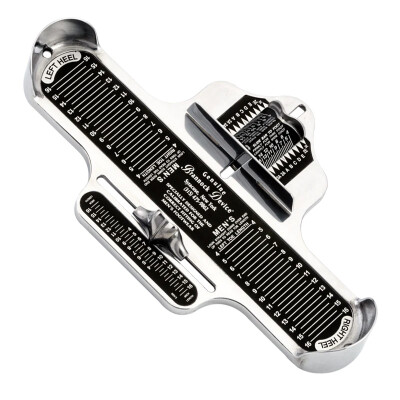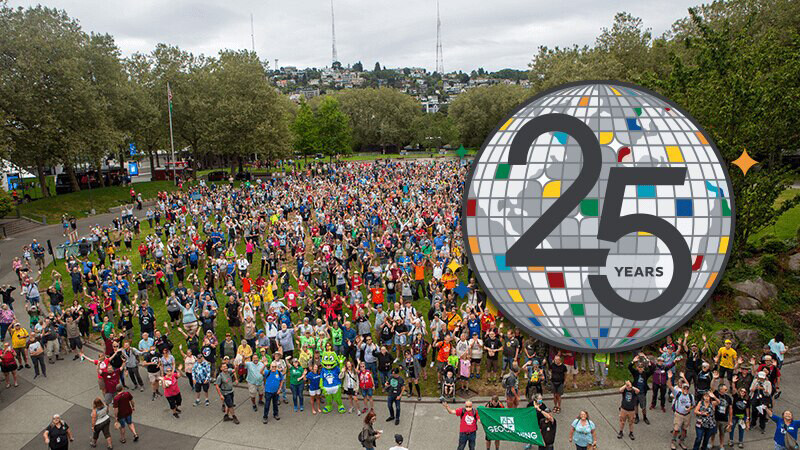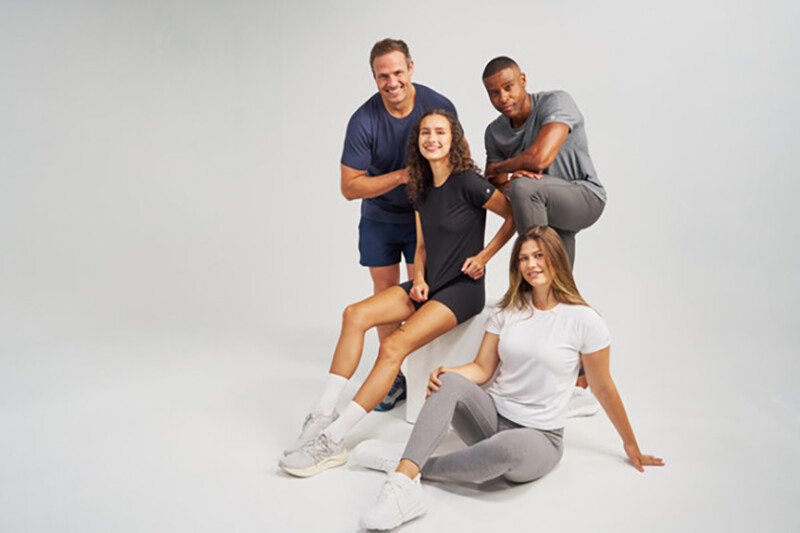Remember the first time you were fit for running shoes? A sales associate maybe asked you to take off your street shoes and cotton tube socks, then leaned in and stared at your naked bare feet longer than anyone ever had before.
They pointed out various landmarks you never knew you had. Threw out jargony terms like high instep, voluminous midfoot and moderate heel girth. Maybe they busted out a banged-up Brannock device and confidently measured both feet, seated and standing, while mumbling cryptic whispers about your weighted arch length differential. “Did she just say I had a bunionette? you maybe thought. “What in the heck is that?”
Quite possibly your shoe fitter extraordinaire was clad in shorty shorts and a snug singlet and asked you to run outside on the sidewalk or inside on a treadmill. “I want to take a closer look at your gait tendencies,” they said while squatting down behind you. Shoot, maybe they even videotaped your feet in motion and played it back a dozen times, going on and on about your late-stage pronation and hallux rigidus while you nodded in agreement — even though you had no idea what in the heck they were talking about.
Ahhh, the good old days.
Newer runners likely don’t remember shops before all of today’s electronic bells and whistles. These days, modern innovations such as cloud-based foot scanners, walk-across pressure plates, personalized footwear selection algorithms (and more) are ubiquitous in run specialty shops. Scads of data are rendered onto hand-held devices allowing for real time, collaborative analysis with wide-eyed customers who are likely more impressed by their animated feet on a screen than they are to learn their foot category. “Stability? Yeah, OK. But can I see my scan again, please?”
Sure, high-end, cutting-edge accoutrements may be what brings your customer in for their initial visit, but it’s not why they return. In fact, their subsequent visits likely have little to do with all the fancy tech you now swear by.
Rather, hard-earned customer loyalty is dependent on your willingness to sit across from each customer while taking time to make a genuine and lasting connection.
The Role of Technology
Tech, when utilized at the highest level in a specialty run environment, should inform fitters’ options rather than dictate an outcome. The biggest challenge these days is to not allow all the engaging tech to get in the way of the bigger picture. How your personal service makes the customer feel will always be what makes an in-store experience unforgettable.
Shoe fitters need to be wildly proficient at using whatever technology your store employs. But above that, they need to be experts at foot and lower leg anatomy, barefoot analysis and biomechanics. They ought to have working knowledge of all the common injury symptoms and complaints for which customers need immediate solutions. Staff should be so adept at deciphering the bare foot that even if the power goes down on a busy Saturday of a tax-free holiday weekend during a multi-race packet pickup, their ability to knock out a string of high-quality shoe fits will not be compromised.
There’s no denying that today’s technological revolution adds a vital, super cool component to the shoe fitting process. The personalization, besides being innately compelling, is novel, exciting and resonant with the customer’s expectation of stellar service. The long lines of smarter-than-ever connected customers, even the occasional naysayers, love interacting with programs and apps that get them closer to the perfect fit.
But your eyes and ears, more than a smartscreen loaded with useful data points, should forever be the primary data gatherers.
While it has certainly made the fit process more sophisticated, technology has never solely been what makes a run shop great. And it never will be. What makes a run shop worth going back to is a chance to interact with the curious, problem-solving, well-informed and authentic you.







